7 start with B start with B
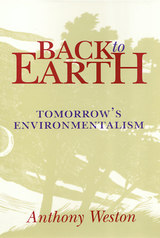
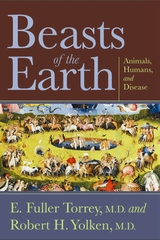
Humans have lived in close proximity to other animals for thousands of years. Recent scientific studies have even shown that the presence of animals has a positive effect on our physical and mental health. People with pets typically have lower blood pressure, show fewer symptoms of depression, and tend to get more exercise.
But there is a darker side to the relationship between animals and humans. Animals are carriers of harmful infectious agents and the source of a myriad of human diseases. In recent years, the emergence of high-profile illnesses such as AIDS, SARS, West Nile virus, and bird flu has drawn much public attention, but as E. Fuller Torrey and Robert H. Yolken reveal, the transfer of deadly microbes from animals to humans is neither a new nor an easily avoided problem.
Beginning with the domestication of farm animals nearly 10,000 years ago, Beasts of the Earth traces the ways that human-animal contact has evolved over time. Today, shared living quarters, overlapping ecosystems, and experimental surgical practices where organs or tissues are transplanted from non-humans into humans continue to open new avenues for the transmission of infectious agents. Other changes in human behavior like increased air travel, automated food processing, and threats of bioterrorism are increasing the contagion factor by transporting microbes further distances and to larger populations in virtually no time at all.
While the authors urge that a better understanding of past diseases may help us lessen the severity of some illnesses, they also warn that, given our increasingly crowded planet, it is not a question of if but when and how often animal-transmitted diseases will pose serious challenges to human health in the future.

Well over a century after Darwin gave biology its unifying theory of evolution, the earth sciences experienced a similar revolution and the theory of plate tectonics took hold. Plate tectonics posed the idea that the earth's crust is divided into a number of large, thin plates always in motion relative to one another. In The Behavior of the Earth, world-renowned earth scientist Claude Allègre sets forth the exciting events in this contemporary revolution from its first stirrings in the nineteenth-century and Alfred Wegener's original model of continental drift (1912) through the development of its full potential in modern plate-tectonic theory.
Few scientific theories have been so all-encompassing, and none has surpassed plate tectonics in explaining such a wide variety of geological phenomena, from the origins of mountain building to the formation of the ocean floor. As it integrated our knowledge of the earth's surface with the investigation of its interior, plate tectonics fused two previously autonomous strains of scientific inquiry. Continental mobility changed for all time our view of the earth from a static globe to an evolving, living planet, and allowed us to see that changes in the earth's surface are but exterior manifestations of a dynamic interplay of forces within the crust and the mantle.Allègre casts his lucid exposition of this scientific theory within the historical context of its struggle for acceptance. As he introduces us to the huge cast of personalities and researchers who contributed to the theory, he illuminates the complex role that the scientific community plays in the proliferation and acceptance of new ideas. Allègre is as insightful in discussing the human motivation for scientific endeavor as he is skillful in presenting the science that results from this effort. Richly illustrated and including a glossary, this book offers the reader rare access both to the central theory of plate tectonics and to the constellation of problems and possibilities that preoccupy earth scientists today.
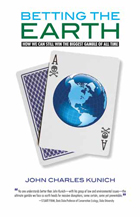
"Betting the Earth explores the uneasy parallels between our contemporary environmental challenges and our national fascination with gambling. How much should we bet on preserving biodiversity? Should we bet more on responding to climate change? where should we place each bet: on federal or state laws, on acquiring public or private preserves, on preventing environmental harms or saving places of special environmental significance? Like it or not, we must make such choices every day, and Betting the Earth helps us to understand how we do so."
Professor John Copeland Nagle, John N. Matthews Chair in Law, University of Notre Dame Law School
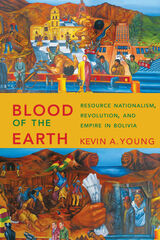
Conflicts over subterranean resources, particularly tin, oil, and natural gas, have driven Bolivian politics for nearly a century. “Resource nationalism”—the conviction that resource wealth should be used for the benefit of the “nation”—has often united otherwise disparate groups, including mineworkers, urban workers, students, war veterans, and middle-class professionals, and propelled an indigenous union leader, Evo Morales, into the presidency in 2006. Blood of the Earth reexamines the Bolivian mobilization around resource nationalism that began in the 1920s, crystallized with the 1952 revolution, and continues into the twenty-first century.
Drawing on a wide array of Bolivian and US sources, Kevin A. Young reveals that Bolivia became a key site in a global battle among economic models, with grassroots coalitions demanding nationalist and egalitarian alternatives to market capitalism. While US-supported moderates within the revolutionary regime were able to defeat more radical forces, Young shows how the political culture of resource nationalism, though often comprising contradictory elements, constrained government actions and galvanized mobilizations against neoliberalism in later decades. His transnational and multilevel approach to the 1952 revolution illuminates the struggles among Bolivian popular sectors, government officials, and foreign powers, as well as the competing currents and visions within Bolivia’s popular political cultures. Offering a fresh appraisal of the Bolivian Revolution, resource nationalism, and the Cold War in Latin America, Blood of the Earth is an ideal case study for understanding the challenges shared by countries across the Global South.
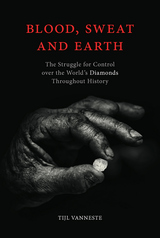
Blood, Sweat and Earth is a hard-hitting historical exposé of the diamond industry, focusing on the exploitation of workers and the environment, the monopolization of uncut diamonds, and how little this has changed over time. It describes the use of forced labor and political oppression by Indian sultans, Portuguese colonizers in Brazil, and Western industrialists in many parts of Africa—as well as the hoarding of diamonds to maintain high prices, from the English East India Company to De Beers. While recent discoveries of diamond deposits in Siberia, Canada, and Australia have brought an end to monopolization, the book shows that advances in the production of synthetic diamonds have not yet been able to eradicate the exploitation caused by the world’s unquenchable thirst for sparkle.
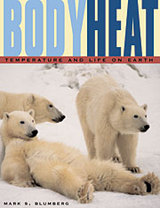
Whether you're a polar bear giving birth to cubs in an Arctic winter, a camel going days without water in the desert heat, or merely a suburbanite without air conditioning in a heat wave, your comfort and even survival depend on how well you adapt to extreme temperatures.
In this entertaining and illuminating book, biopsychologist Mark Blumberg explores the many ways that temperature rules the lives of all animals (including us). He moves from the physical principles that govern the flow of heat in and out of our bodies to the many complex evolutionary devices animals use to exploit those principles for their own benefit.
In the process Blumberg tells wonderful stories of evolutionary and scientific ingenuity--how penguins withstand Antarctic winters by huddling together by the thousands, how vulnerable embryos of many species are to extremes of temperature during their development, why people survive hour-long drowning accidents in winter but not in summer, how certain plants generate heat (the skunk cabbage enough to melt snow around it). We also hear of systems gone awry--how desert species given too much water can drink themselves into bloated immobility, why anorexics often complain of feeling cold, and why you can't sleep if the room is too hot or too cold. After reading this book, you'll never look at a thermostat in quite the same way again.
READERS
Browse our collection.
PUBLISHERS
See BiblioVault's publisher services.
STUDENT SERVICES
Files for college accessibility offices.
UChicago Accessibility Resources
home | accessibility | search | about | contact us
BiblioVault ® 2001 - 2024
The University of Chicago Press









